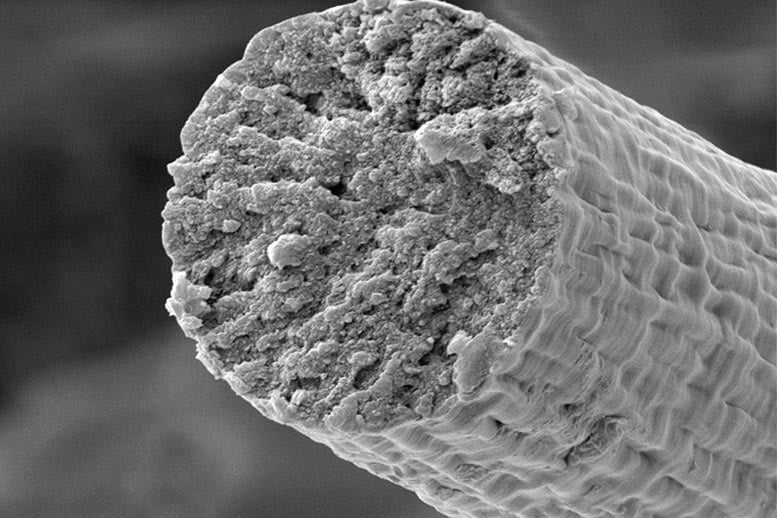Would you wear clothes made of muscle fibers? Would you use them to tie your shoes or even as a belt? It may seem a little strange, but if those fibers can withstand more energy before breaking than cotton, silk, nylon, or even Kevlar, then why not?
Don't worry, they are muscle fibers produced without harming a single animal.
The researchers of the McKelvey School of Engineering at Washington University in St. Louis have developed a synthetic chemistry approach to polymerize proteins within engineered microbes. This allowed the microbes to produce a high molecular weight muscle protein, la titina, which was then transformed into muscle fibers.
The research has been published in the journal Nature Communications.
Muscle fibers born from bacteria and ready to wear
The production of these muscle fibers can be inexpensive and scalable. It could allow for many applications that people had previously thought of, but with natural fibers. Now, these applications can come to fruition without the need for real animal tissues.
Fuzhong zhang, Department of Energy, Environmental and Chemical Engineering, Washington University.

I'm looking for the titina (sorry, I had to make this reference as a boomer)
The synthetic muscle protein produced in Zhang's laboratory, as mentioned, is the titina. Titin is one of the three main protein components of muscle fibers. What makes it special is the size of its molecules. It is practically the largest known protein in nature.
Scientists have long been trying to design materials with muscle-like properties, primarily for robotics. By creating synthetic muscle from microbes we may have hit the mark.
The research team engineered the microbes to piece together smaller segments of the protein into ultra-high molecular weight polymers of around two megadaltons in size, about 50 times the size of an average bacterium. They then used a wet spinning process to convert the proteins into muscle fibers about ten microns in diameter, or one-tenth the thickness of a human hair.
The analysis of the fibers obtained
Working with collaborators Young Shin Jun e Sinan Keten, Zhang then analyzed the structure of these muscle fibers to identify the molecular mechanisms that enable their unique combination of factors. Exceptional strength, damping capacity, ability to dissipate mechanical energy as heat and more.
Possible applications for microbial muscle fibers? Aside from elegant clothing or protective armor (these fibers are stronger than Kevlar, the material used in bulletproof vests), this material also has many potential biomedical applications. Since it is almost identical to the proteins found in muscle tissue, it is presumably biocompatible and could therefore be a great material for sutures, tissue engineering and whatnot.


